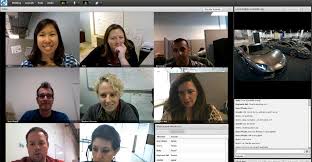 I’m an unabashed fan of live human interaction. Face-to-face meetings. Focus groups, ethnographic work and in-depth interviews. Creative ideation sessions and workshops. Road trips with clients for research, store checks or other in-market experiences.
I’m an unabashed fan of live human interaction. Face-to-face meetings. Focus groups, ethnographic work and in-depth interviews. Creative ideation sessions and workshops. Road trips with clients for research, store checks or other in-market experiences.
Not that I need any reinforcement for this passion, but I found a heaping portion of it in a New York Times Magazine piece, Terry Gross and the Art of Opening Up, a feature on the talented host of the NPR radio show “Fresh Air.” The author, Susan Burton, writes how Gross’s subjects love to talk to her and that her “interviews have often been compared to therapy.” Matthew Weiner, the creator of “Mad Men,” described how he imagined what it would be like to be interviewed “by Gross years before it first happened” and once it did, thinking “Oh, this is my fantasy of a conversation.”
‘‘’Having the conversation’ — that’s what’s compelling about the wish. It’s a wish not for recognition but for an experience. It’s a wish for Gross to locate your genius, even if that genius has not yet been expressed. It’s a wish to be seen as in a wish to be understood.”
That’s exactly what we go for in our qualitative research – a therapy-like experience that leads to deep understanding. And I’m still a believer that face-to-face encounters are far more likely to yield those Terry Gross-like results.
However, mainstream thinking has clearly shifted to a very different point-of-view, as captured by an excellent LinkedIn post titled, “Dear Focus Group, We Need To Talk,” creatively framed as a “Dear John” breakup letter: Yes, we had some good times together, but now it’s time to move on.
The essay makes many excellent points about the benefits of shifting most, if not all, qualitative research online.
“You can’t see them (online)”, you cry! I know. I understand that. But I can share their lives, see what they do and ask them for their views. All without being interrupted or stymied by others, from anywhere in the country (or world). I want to see their lives, not just the whites of their eyes. And, besides, if I do need to see them or put their views in front of my stakeholders then I can get a video vox-pop of them quickly and efficiently – whites of their eyes and from the context of their lives.”
Despite my bias toward live and in person, the digital world presents wonderful opportunities for researchers. I particularly like how respondents can use their phones to create online diaries, documenting thoughts and experiences in the moment with photographs, sound or video. We conduct customer and internal interviews with people all over the world via Skype, Google Hangouts or other meeting software for our B2B clients. We also conduct online focus groups and bulletin boards. Liberation from geographical constraints in gathering respondents is no small thing.
In addition, much criticism of focus groups is well deserved. The artificial environment, the tendency of respondents to quickly turn into marketing critics and strong personalities hijacking groups can derail even the best efforts. Moreover, constant belt-tightening in business creates all kinds of time, travel and budget constraints. Our clients used to love escaping to the road to do research. Now they live in fear of the workload and backlog of meetings that will inevitably await them after missing just a few days in the office. Most importantly, qualitative work is so often ill-planned or simply botched.
I may be somewhat justified in thinking that my company has addressed many of the issues that plague traditional qualitative work. We have great success with our proprietary techniques, but as stated so exquisitely in the “Dear Focus Groups” piece, the digital world offers great opportunity and even greater potential for understanding how our customers think and behave.
Still, there’s something about being physically in the moment. There’s a huge difference between knowing something and truly feeling it. Being there, even viewing through a one-way mirror, is far more engaging than watching remotely on a screen. Better yet, the visceral experience of a consumer workshop conducted in a comfortable, creative environment – not a focus group facility – with clients and consumers together in the same room, will not only provide exponentially more impact on key decision makers, but also help to give those attendees a sense of ownership in the process.
There’s “depth,” and then there’s “depth.” Of course, digital interviews can go deep. And we’ll see all kinds of themes and individual quirks emerge from online diaries with words, sounds, photos and video. But do we feel the work as deeply when we’re not in the moment? Are we thinking of it analytically and intellectually or truly internalizing and believing?
Uncovering insights is only part of research, just the beginning, really. The larger purpose is to use those findings to build strategic consensus and execute faithfully against it in a seamless, unified fashion. I would strongly argue that we do this far better, with more confidence and conviction, when we truly feel something rather than simply knowing it.
Like Matthew Weiner, who wanted Terry Gross to find the genius in him, respondents seem almost desperate for us to discover the “genius” in them. That genius is not their intellect or creativity, but their humanity. And humanity is and will always be best understood through direct, personal experience.
Indeed, let’s streamline, automate and digitize where we can. But let’s never forget that relationships, including those between brands and their consumers, are based on human connections and other intangibles that are sometimes best forged in the moment, in person.
It should not a question of “saying goodbye” to one method or another. Rather, the discussion should focus on striking the right balance.



